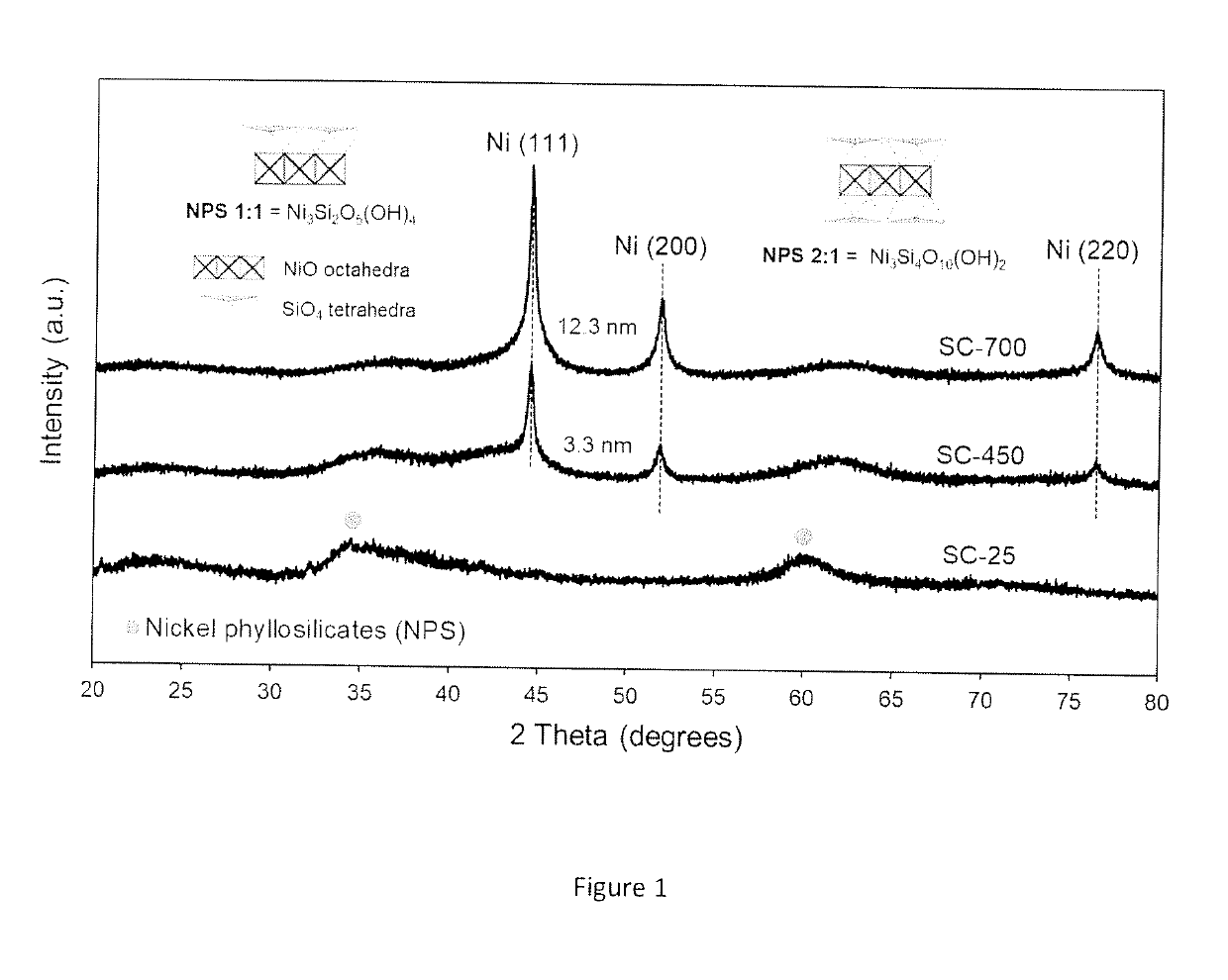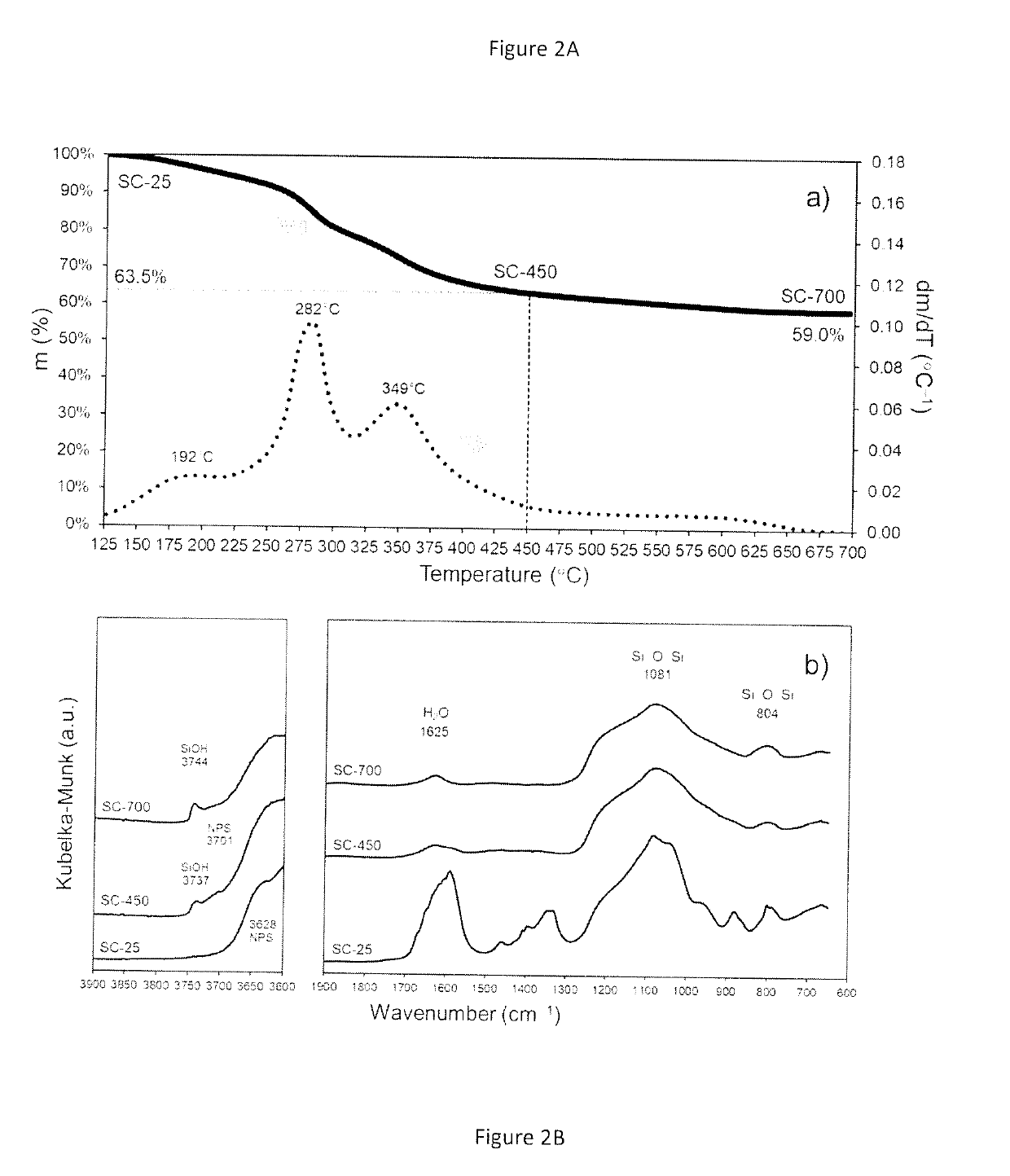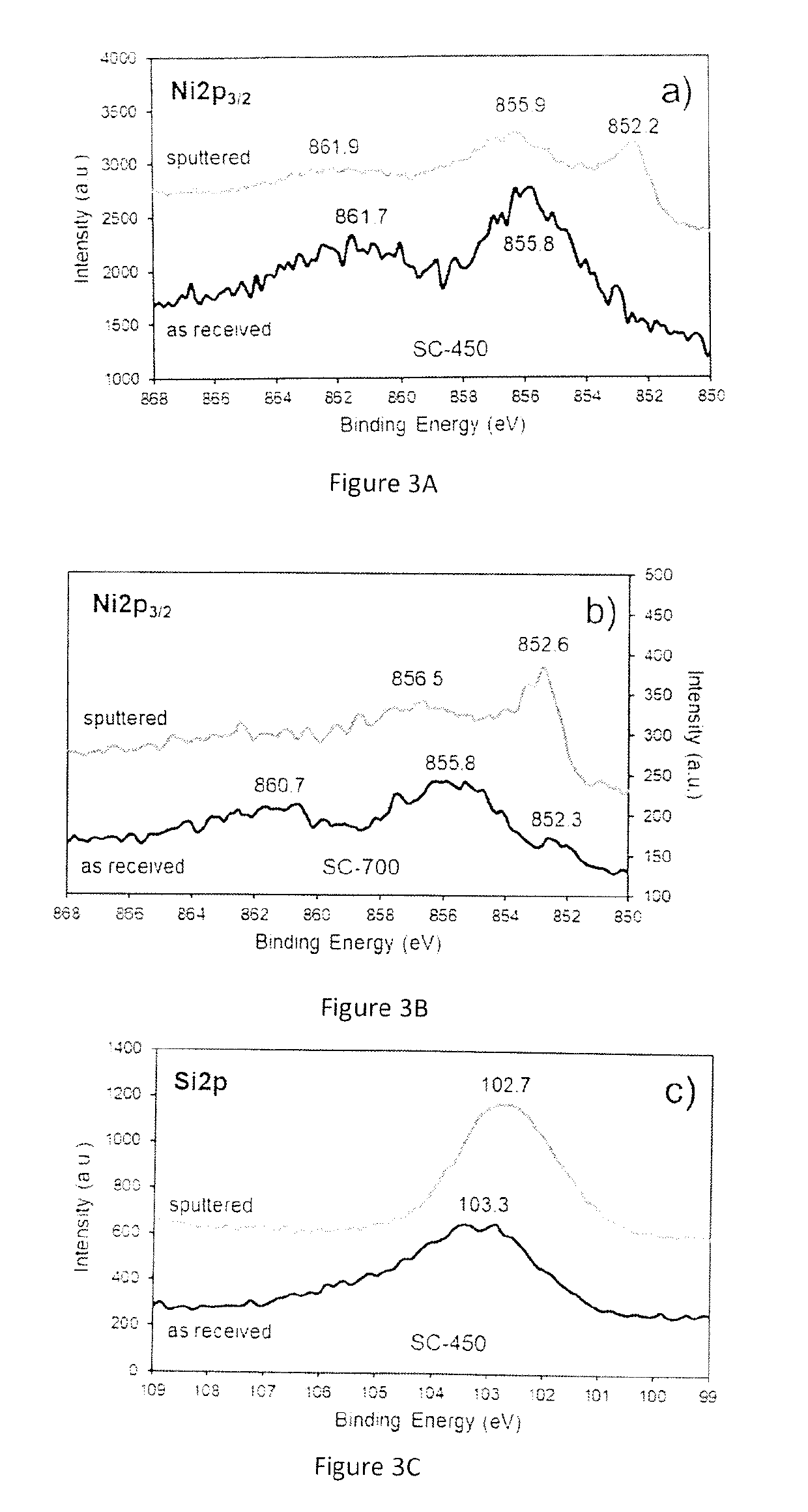Catalysts comprising silicon modified nickel
- Summary
- Abstract
- Description
- Claims
- Application Information
AI Technical Summary
Benefits of technology
Problems solved by technology
Method used
Image
Examples
example 1
References for Example 1
[0088]1. R. Conrado et al., Science, 343 (2014) 621-623.[0089]2. R. Lipski, Gas Processing & LNG, October 2013.[0090]3. E. Lim et al., Can J Chem Eng 94 (2016) 623-635.[0091]4. J. Piña et al., Latin America Applied Research 36 (2006) 289-294.[0092]5. S. Rabe et al., Appl Catal A: Gen 292 (2005) 177-188.[0093]6. Z. Boukha et al., Appl Catal A: Gen 556 (2018) 191-203.[0094]7. R. K. Singha et al., Appl Catal B: Env 202 (2017) 473-488.[0095]8. Y. Zhu et al., ACS Catal 3 (2013) 2627-2639.[0096]9. L. Yan et al., Green Chem, 19 (2017) 4600-4609.
example 2
[0097]It is advantageous to use inexpensive oxidizing agents to carry out the oxidation of methane. Air is abundant and readily available and, thus, it is considered the most suitable oxidizing agent from an economical point of view. Although H2O and CO2 can also oxidize CH4, their use is practical only if it leads to an enhancement in the overall efficiency of the process. Thermodynamic calculations indicate that by increasing the amount of oxygen, a high conversion of CH4 can be achieved, although with a high selectivity to CO2 as the penalty. Since the reactor system is operated away from equilibrium conditions, the selectivity toward unwanted CO2 production (while maintaining the high CH4 conversion) should be minimized. Hence, the maximum amount of oxygen to be used can be estimated based on process safety considerations.
[0098]FIG. 8 shows a ternary flammability diagram for the system CH4—O2—N2. As can be seen, the partial oxidation line (associated to the partial oxidation or ...
example 3
Synthesis and Characterization of the Catalytic Material
[0099]The chemicals used for the preparation of the catalytic materials include nickel formate dihydrate and tetraethyl orthosilicate (TEOS) as nickel (Ni) and silica (SiO2) precursors, respectively. A benefit of using nickel formate dihydrate is that this precursor can be directly converted to metallic nickel upon heating under inert environments. An important aspect to be appreciated is that no hydrogen is required at any stage of the process to prepare the catalytic material.
[0100]The catalyst synthesis was carried out using a sol-gel approach, which usually involves the use of acids or bases as catalysts to accelerate the polymerization of the silicon-containing species. However, the procedure here described does not require acids or bases as catalysts and can take place in presence of the nickel formate precursor alone. The presence of the nickel formate species drives the polymerization process to produce a catalytic mate...
PUM
| Property | Measurement | Unit |
|---|---|---|
| Temperature | aaaaa | aaaaa |
| Temperature | aaaaa | aaaaa |
| Particle size | aaaaa | aaaaa |
Abstract
Description
Claims
Application Information
 Login to View More
Login to View More - R&D
- Intellectual Property
- Life Sciences
- Materials
- Tech Scout
- Unparalleled Data Quality
- Higher Quality Content
- 60% Fewer Hallucinations
Browse by: Latest US Patents, China's latest patents, Technical Efficacy Thesaurus, Application Domain, Technology Topic, Popular Technical Reports.
© 2025 PatSnap. All rights reserved.Legal|Privacy policy|Modern Slavery Act Transparency Statement|Sitemap|About US| Contact US: help@patsnap.com



